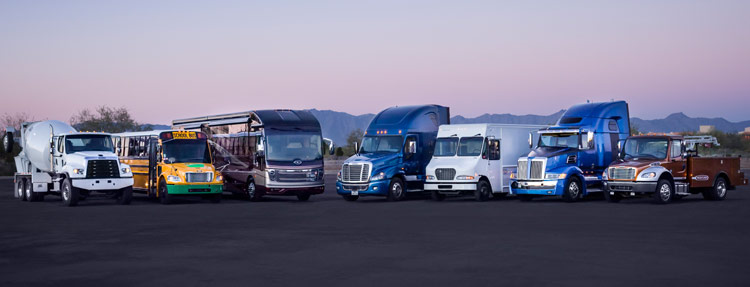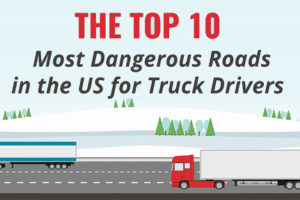When you say “connected fleet,” it invokes ideas of driverless trucks spanning the nation’s highways communicating with each other and the highway infrastructure. Imagine being virtually connected to road signs, weigh stations, toll booths and intersections as well as pick up and delivery locations. Some of that exists today and much of it is a near-term possibility, we have to leverage the current connectivity available today to smarten our fleet operations while continuing to innovate for tomorrow with trusted technology partners to best achieve continuous business success.
We are at a critical junction in our industry not seen since the dawn of deregulation in 1980. Whether your business came of age during the initial deregulation or you experienced the market change, you understand that there was a fundamental shift in freight transportation. We went from cost prohibitive filing and permit based logistics to a free market driven enterprise. Today areas such as e-commerce shipments are adding logistical pressures to trucking companies. According to freight consultant firm Dan Goodwill & Associates e-commerce shipments will expand four times faster than the U.S. economy. To address these pressures and other technology trends, connecting supply chain, trucks and companies together with today and tomorrow’s technology will be paramount in revolutionizing the trucking industry.
In today’s day and age practically everything can be a connected or smart device. But how do you collect and analyze data from these connected trucks, scale to manage more connectivity on a truck and, most importantly, leverage the information across your fleet to monetize it for your business? Put simply, how do you turn the great connected fleet concept into smart fleet management driven by data and insights generated for the next era of fleet business? Fleets that achieve these connections will be virtually shrinking the world with technology similar to what the jet engine did for air travel and the internet did for information communication.
The first step in leveraging the connected offerings in your fleet is to partner with innovators who understand how IT can become a fundamental part all parts of your fleet, not just the backend operations. Thus, the real magic of a connected fleet will be inside the products that help collect data, act on that data and deliver safe, efficient, cost-controllable and compliant fleets to their end customers based on that data. Smart fleet management technology connects owners and managers, trucks and mobile workers with powerful back-office systems. With these systems, you can create and manage your business plans, win the job, and easily manage the vehicles in your fleet with data-driven decisions. Instead of being overwhelmed by technology, the goal should be to simplify the modern world of data collection, compliance requirements, and endless paperwork for drivers and fleet managers. Technology should return the satisfaction of a hard day’s driving with in-cab applications that are easier to use than the radio and more effective than email, allowing your drivers to focus on what they love – not on maintaining paperwork, collecting data, and ensuring compliance on the open road. Keep your peace of mind as your business grows, with unimaginable insights, new efficiencies, simplicity and safety.
Data capture is happening across fleets today and those fleets are gaining more and more actionable insights into their operations. For example, your truck with a computer becomes an intelligent device that can now track your engine’s health and proactively alert you when it’s time for maintenance updates. It’s an undeniable fact that more things are being connected to the internet including just about everything on a truck. The next generation of power and the potential of these connected devices comes not just in connecting these things to the cloud, but in having them receive information from the cloud. This will open up entirely new streams of revenue for fleets and make the promise of smart fleet management much more real. It’s one thing to push data out, but another for a truck to receive data and augment its functionality or implement operational changes to improve safety and efficiency.
As fleets embrace the shift to smart fleet management, the market is still asking how to take advantage of the benefits of a world of connected trucks. And now there are answers. Smart fleet management technology providers help fleets connect more things, deliver more goods and vastly accelerate their move to connected trucks that align with core business objectives of having safe, compliant and increasingly efficient fleets.
The Internet of Things (IoT), connected trucks and smart fleet management are not just marketing buzz words. Over time the terminology will surely change, but the core of these technologies is helping fleets run their operations smarter and producing tangible business outcomes today. Safety, vehicle uptime, diagnostics and compliance initiatives remain driving forces as any major trucking company will tell you.
The world is becoming more connected every day. As the backbone of the US economy, it will be imperative that our industry leverage the, according to research firm IDC, expected $1.9 trillion that IoT in logistics is expected to generate. We are at the tip of the iceberg and the time is now to invest in your infrastructure with strategic partners to help you on the road toward technology innovation and smart fleet management. With smarter trucks and smarter fleet management, there will be smarter logistics. As fleets adopt to changing landscape within the trucking industry, the gap between connected vehicles and non-connected vehicles is rapidly expanding. Those vehicles without smart fleet management technology will soon fall victim to societies technological advances and, in turn, lack the ability to remain modernized and competitive. Nobody is going to know your business better than you which can make picking the right partners challenging. Cut through hyperbole and be sure to partner with those who understand your business and can help you improve it with people driven expertise and technological legacy of innovation.
(This article was originally posted in ATA’s Business Solutions e-newsletter)







